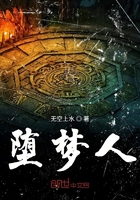But underlying this thought—the first and no doubt the less complex of the two—there was,in our opinion,a second,a more modern—a corollary to the former idea,less on the surface and more likely to be contested;a view fully as philosophic,but pertaining no longer exclusively to the priest,but to the scholar and the artist likewise.It was a premonition that human thought,in changing its outward form,was also about to change its outward mode of expression;that the dominant idea of each generation would,in future,be embodied in a new material,a new fashion;that the book of stone,so solid and so enduring,was to give way to the book of paper,more solid and more enduring still.In this respect the vague formula of the Archdeacon had a second meaning—that one Art would dethrone another Art:Printing will destroy Architecture.
In effect,from the very beginning of things down to the fifteenth century of the Christian era inclusive,architecture is the great book of the human race,man's chief means of expressing the various stages of his development,whether physical or mental.
When the memory of the primitive races began to be surcharged,when the load of tradition carried about by the human family grew so heavy and disordered that the word,naked and fleeting,ran danger of being lost by the way,they transcribed it on the ground by the most visible,the most lasting,and at the same time most natural means.They enclosed each tradition in a monument.
The first monuments were simply squares of rock'which had not been touched by iron,'as says Moses.Architecture began like all writing.It was first an alphabet.A stone was planted upright and it was a letter,and each letter was a hieroglyph,and on every hieroglyph rested a group of ideas,like the capital on the column.Thus did the primitive races act at the same moment over the entire face of the globe.One finds the'upright stone'of the Celts in Asiatic Siberia and on the pampas of America.
Presently they constructed words.Stone was laid upon stone,these granite syllables were coupled together,the word essayed some combinations.The Celtic dolmen and cromlech,the Etruscan tumulus,the Hebrew galgal,are words—some of them,the tumulus in particular,are proper names.Occasionally,when there were many stones and a vast expanse of ground,they wrote a sentence.The immense mass of stones at Karnac is already a complete formula.
of all they made books.Traditions had ended by bringing forth symbols,under which they disappeared like the trunk of a tree under its foliage.These symbols,in which all humanity believed,continued to grow and multiply,becoming more and more complex;the primitive monuments—themselves scarcely expressing the original traditions,and,like them,******,rough-hewn,and planted in the soil—no longer sufficed to contain them:they overflowed at every point.Of necessity the symbol must expand into the edifice.Architecture followed the development of human thought;it became a giant with a thousand heads,a thousand arms,and caught and concentrated in one eternal,visible,tangible form all this floating symbolism.While Ddalus,who is strength,was measuring;while Orpheus,who is intelligence,was singing—the pillar,which is a letter;the arch,which is a syllable;the pyramid,which is a word,set in motion at once by a law of geometry and a law of poetry,began to group themselves together,to combine,to blend,to sink,to rise,stood side by side on the ground,piled themselves up into the sky,till,to the dictation of the prevailing idea of the epoch,they had written these marvellous books which are equally marvellous edifices:the Pagoda of Eklinga,the Pyramids of Egypt,and the Temple of Solomon.
The parent idea,the Word,was not only contained in the foundation of these edifices,but in their structure.Solomon's Temple,for example,was not simply the cover of the sacred book,it was the sacred book itself.On each of its concentric enclosures the priest might read the Word translated and made manifest to the eye,might follow its transformations from sanctuary to sanctuary,till at last he could lay hold upon it in its final tabernacle,under its most concrete form,which yet was architecture—the Ark.Thus the Word was enclosed in the edifice,but its image was visible on its outer covering,like the human figure depicted on the coffin of a mummy.
Again,not only the structure of the edifice but its situation revealed the idea it embodied.According as the thought to be expressed was gracious or sombre,Greece crowned her mountains with temples harmonious to the eye;India disembowelled herself to hew out those massive subterranean pagodas which are supported by rows of gigantic granite elephants.
Thus,during the first six thousand years of the world—from the most immemorial temple of Hindustan to the Cathedral at Cologne—architecture has been the great manu of the human race.And this is true to such a degree,that not only every religious symbol,but every human thought,has its page and its memorial in that vast book.
Every civilization begins with theocracy and ends with democracy.















